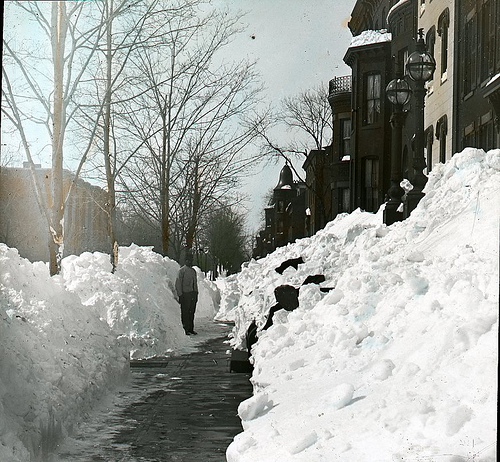How to prepare for a winter storm is a vital question for New Englanders. While some of the considerations needed to answer this question might seem obvious, it is always best to be as prepared as possible when gearing up for winter weather. Our tips below will provide you with everything you need to know about winter weather watches, advisories, and warnings, as well as advice on how to prevent cold weather injuries and remain warm and safe during a winter storm.
Winter Storm Warnings:
Whether it’s heard, seen, or read from the radio, television, or Internet, when a meteorologist forecasts an upcoming winter storm, they will use the following terms to describe the weather event as it approaches. Here’s how to decipher what they mean.
 Winter Storm Watch: stay tuned and alert, a storm is very likely.
Winter Storm Watch: stay tuned and alert, a storm is very likely.- Winter Weather Advisory: expect the winter weather to create general inconveniences and hazards for everyone, especially motorists.
- Freeze/Frost Warning: expect temperatures to drop below freezing and cause damage to plant life such as ornamental plants, crops, and fruit trees.
- Winter Storm Warning: preparative action is needed immediately; a winter weather event is currently entering or has already arrived in the area.
- Blizzard Warning: a harsh combination of snow and high winds will cause blinding and blowing snowfall, high snow drifts, near-zero visibility, and life-threatening wind chill factors. If not already in a warm and sheltered place, take refuge immediately.
Wearing the Right Gear:
Cold and frigid temperatures can be unpredictable, dangerous, and deadly. If a person is caught off guard by or left ill-prepared in extremely cold temperatures, frostbite and hypothermia can quickly become serious hazards. Again, knowledge is key, so use the following tips to help you prevent cold injuries during the winter.
- Wear weather-specific clothing for wet, windy, and cold conditions.
- Dress in layers whenever possible, and remember to include at least one moisture-repellant layer for wet-weather protection.
- Take time to dry off -short breaks in dry & warm areas are very important
- Rest is necessary and over-exhaustion is dangerous, as a human body needs energy stores to maintain core temperatures.
- Share the responsibility for noticing any new symptoms of frostbite or hypothermia, and travel with a partner if possible.
- If you know you will be exposed to frigid temperatures, prepare yourself from the inside out with warm, sweet beverages and avoid caffeine and alcohol.
- Also, if you know you will be exposed to extreme cold, warm, high-calorie foods will give the body the energy it needs to keep core temperatures in the safe zone longer.
More Winter Hazards to Be Prepared For
The winter season can be particularly dangerous. Be on the look out for risky situations all around you during these months. Take extra time considering all scenarios, as even the most mundane tasks of summer can become unsafe in the winter. Here are some additional safety considerations.
- Be cautions of hazardous and changing driving conditions such as freezing rain, slippery roadways, low visibility, and lane markers hidden by the snow.
- Untreated walkways, sidewalks, and paths will be slippery and might be blocked with unplowed snow and ice. Step cautiously.
- Tree limbs, icicles, and utility wires may fall from above if they are weighed down with snow. Be aware of what is above you.
- Downed power lines are not uncommon and must be avoided.
- Heavy wet snow, melting snow, or flooding can cause a roof to collapse.
- Back injuries, dehydration, and exhaustion from clearing snow and ice from driveways, walkways, and sidewalks are common. Go easy, ask for help, and stay safe.
The winter season, especially here in New Hampshire, is accompanied by an entirely new series of risks, so it’s crucial to understand how to prepare for a winter storm and the other hazards this season brings.
At Eaton & Berube, your safety is important to us. For additional safety tips and useful resources, please subscribe to our blog or contact us.
